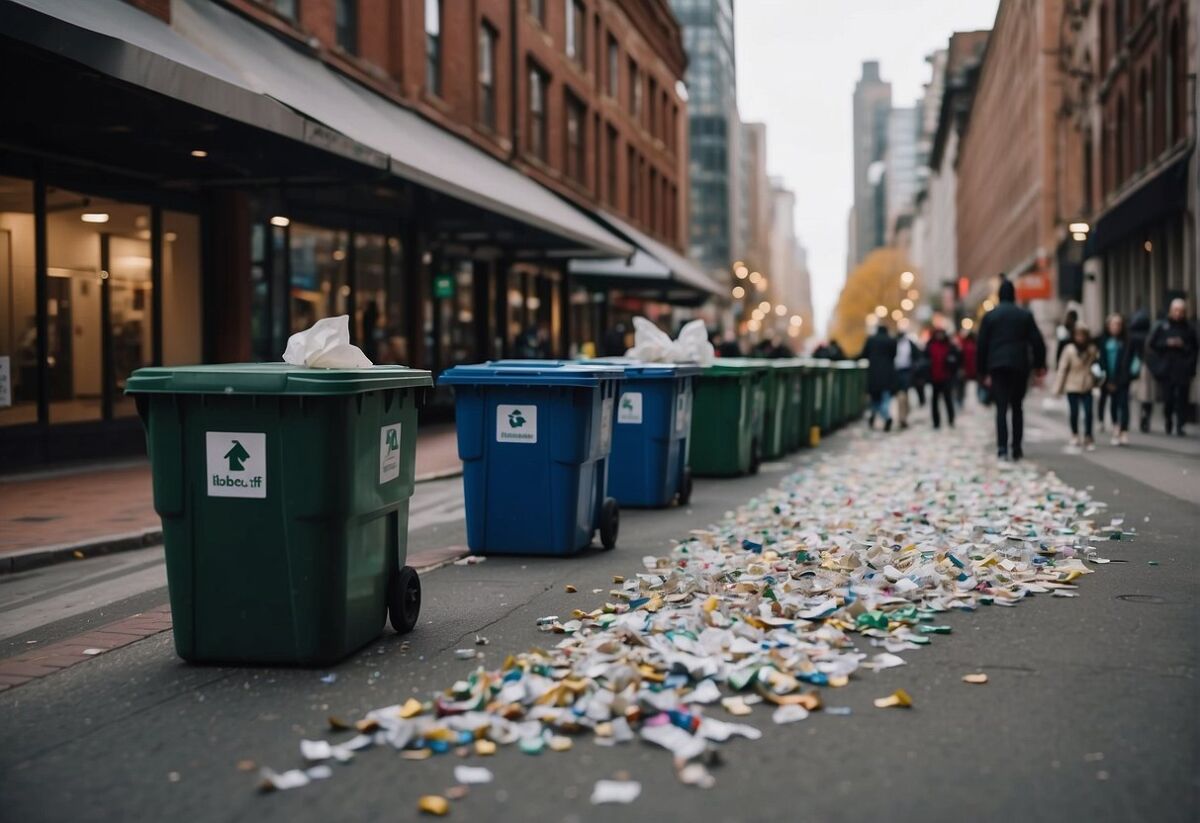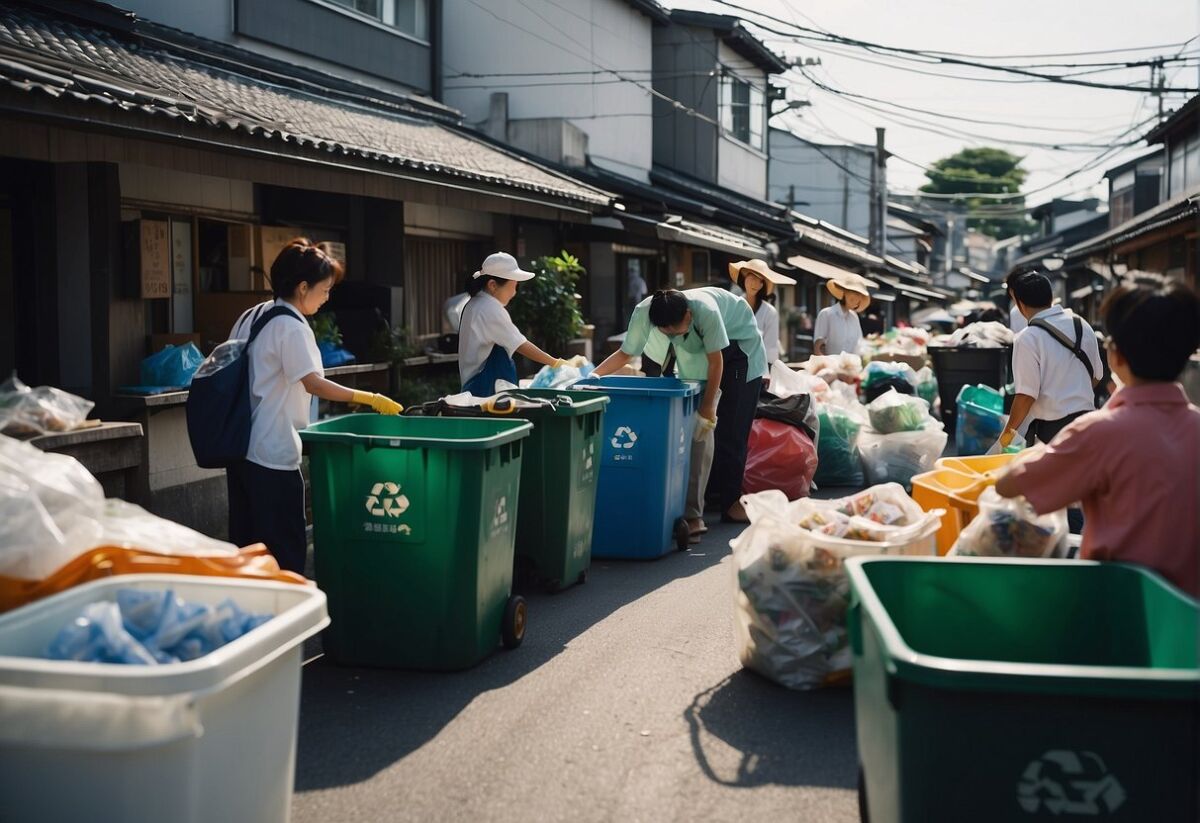Recycling programs are critical in modern waste management practices, enabling the conversion of used materials into useful products. This reduces the burden on landfills and incinerators while conserving natural resources such as timber, water, and minerals.
By rerouting materials from the waste stream, these programs protect the environment and contribute to a circular economy, where products are kept in use for as long as possible, thus maximizing their lifecycle and reducing the need to extract new raw materials.

Across the globe, a range of models of recycling programs have been implemented, often supported by governmental policies, educational initiatives, and international collaboration. These programs vary in scope, ranging from small community-led efforts to large-scale operations backed by major corporations.
Educational programs, especially those targeting students and educators, boost the recycling rate by raising awareness of the proper disposal of waste, such as electronics, batteries, and organic materials.
Beyond environmental benefits, recycling efforts significantly impact the economy by generating jobs in sorting and processing recyclables and providing industries with materials that can be repurposed at a lower cost than virgin materials.
As the world moves towards sustainable planning, case studies of successful recycling initiatives offer hope and a roadmap for communities and nations seeking to enhance their own recycling efforts. These case studies serve as proof that recycling can become a key component in aligning economic progress with environmental stewardship and the appropriate strategy and support.
Japan’s Zero Waste Towns

In Japan, some pioneering communities have taken impressive strides toward waste reduction, setting an example for sustainable living on a global scale.
A notable illustration of this commitment is experienced in the town of Kamikatsu, tucked away on the island of Shikoku. With around 1,500 residents, this town embarked on an ambitious journey to achieve zero waste, beginning as early as 2003.
The strategy in Kamikatsu involves meticulous separation of materials; residents sort their waste into multiple categories. The aim is to recycle as much as possible, diverting waste from landfills. This high level of sorting improves the recycling system’s performance, ensuring that materials recovery facilities can effectively process recycled materials.
A significant aspect of their approach is managing food waste, which is primarily composted and directly supports local agriculture. This is not just about waste but fostering a circular economy, where products and materials are reused and regenerated, creating jobs and boosting the local economy.
While Kamikatsu’s model is unique, it reflects positively on the national recycling strategy. Not only does it successfully decrease waste generation, but it also educates the community about the values of environmental conservation.
Although challenges persist, the town proves that remarkable waste reduction outcomes are possible with community effort and a robust municipal solid waste recycling system.
This demonstrates that small-scale initiatives can significantly improve waste management and serve as scalable models for other towns and cities. Japan’s zero-waste towns are a beacon of hope, indicating that a sustainable future is within reach with concerted effort and innovative strategies.
See Related: Best Zero Waste Stores Online
Sweden’s Waste-to-Energy

Sweden’s approach to handling waste is pioneering, especially with its waste-to-energy (WtE) initiatives. Sweden has aligned environmental protection with energy savings by integrating robust recycling programs with energy recovery.
- Energy Saves: By converting waste into energy, Sweden reduces its reliance on fossil fuels.
- Infrastructure: It boasts an advanced network of district heating plants.
Sustainability is a core component of Sweden’s environmental strategy. The country aims to reduce food waste per person by 20% between 2020 and 2025. The new legislation mandates that all citizens and businesses must separate food waste.
- Recycling Industry: Waste materials find new life here, as garbage becomes a resource for generating heat and electricity.
- Environmental Protection: Sweden’s model curtails land depletion and mitigates the negative impacts of climate change.
- Pollution Reduction: The country’s commitment to renewable energy sources reduces greenhouse gas emissions.
Case Study:
- Gothenburg: This city exemplifies the country’s commitment to integrating waste-to-energy technologies.
These WtE plants transform incinerated trash into heat for nearly half of Sweden’s buildings. This is facilitated by an extensive district heating network, promoting a communal approach to energy consumption.
Sweden also benefits economically by importing waste from countries like the UK and Ireland, providing a revenue stream while assisting in global waste management.
Sweden is a beacon of environmental stewardship, proving that sustainability and infrastructure development can be harmoniously achieved.
Ocean Plastic Recycling Innovations

Innovative solutions addressing ocean plastic recycling have surged, driven by a need for sustainability and environmental justice. Organizations aim to address both prevention and cure, using advanced technologies and community-driven initiatives to tackle the scourge of plastic in the oceans.
Case Studies:
The Ocean Cleanup: This non-profit is at the forefront of the fight against ocean plastics. They developed a dual strategy focusing on intercepting plastics in rivers and extracting plastic waste already circulating within the oceans.
Low-Tech Approaches: Some initiatives underscore the effectiveness of simple yet impactful solutions. These focus on circular economy models, intercepting and recycling plastics before they reach ocean waters.
Technological Innovations:
Microplastic Removal: Techniques such as agglomeration fixation are used to cluster microplastics, making removal from various water bodies more feasible.
Inorganic Compound Extraction: Chelation methods help extract harmful inorganic compounds, such as metals like iron, that may accompany plastic waste.
Recycling Infrastructure:
- Strengthening infrastructure is also a key component. Improving waste management systems and enhancing recycling technologies are pivotal, alongside implementing international frameworks like the Basel Convention.
Community Engagement:
- Encouraging participation and spreading consumer awareness about recycling programs are also critical to success. Moreover, introducing policies that incentivize the recycling of items, including plastic bottles, can significantly contribute to the planet’s health.
These innovations demonstrate that with concerted international effort and the deployment of both high- and low-tech solutions, challenges in ocean plastic recycling can be managed successfully, signaling a hopeful trend for the future sustainability of global waters.
Circular Economy Examples

Within the realm of recycling programs, the circular economy is a model that seeks to minimize waste and make the most of resources. Numerous entities have adopted this transformative approach to foster economic development while promoting waste reduction.
- Manufacturing and Retail: Companies like IKEA, Adidas, and Burger King have integrated circular principles into their operations by focusing on the reuse and recyclability of materials. Furniture giant IKEA encourages the buying and selling used products and has transitioned to using sustainable materials.
- Fashion Industry: Thousand Fell, a footwear brand, exemplifies circularity in the fashion industry by creating shoes from sustainable materials like coconut husk and sugar cane, as well as recycled plastic bottles.
- Local Governments and Municipalities: Many local governments across the EU and the US have taken active steps to reduce waste. They’ve established recycling partnerships and outlined strategic objectives to tackle municipal waste.
- United States Environmental Protection Agency (US EPA): The US EPA has initiated the National Recycling Strategy to improve the municipal solid waste recycling system. This includes reducing the use of virgin plastic and increasing the recycling of post-consumer plastic and e-waste.
- Global Mission: To address the global challenge posed by excessive waste, there is a burgeoning movement among nations to devise and implement a circular economy mission. This aims to scale down the reliance on single-use materials, increase composting, and enhance the management of contaminated materials.
- China and Raw Materials: In response to challenges like importing contaminated cardboard and glass, China has imposed restrictions on waste imports. This has prompted countries to revise their recycling systems and focus more on circular economy practices.
Through these examples, one can see the tangible applications of a circular economy at various scales, demonstrating that a more sustainable and resource-efficient world is not only envisioned but actively pursued.


